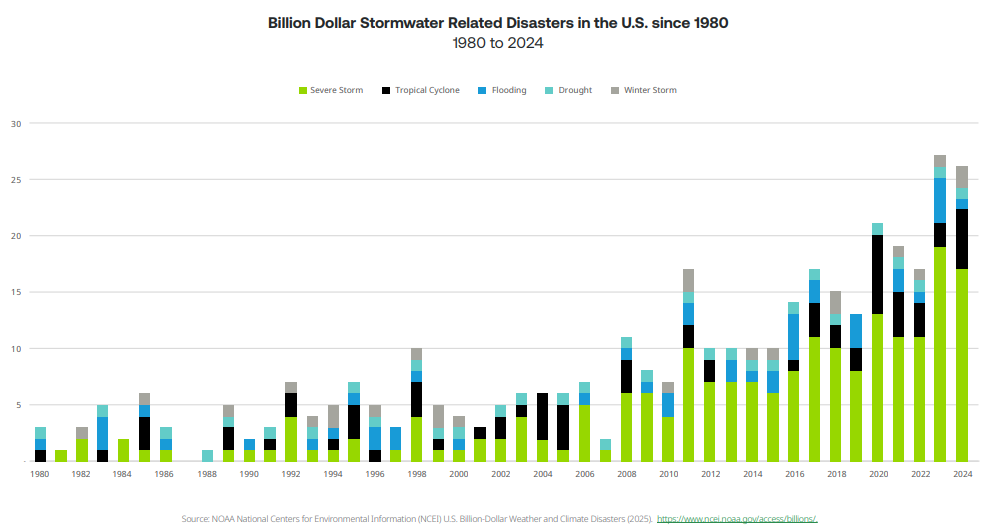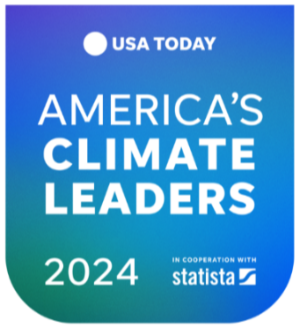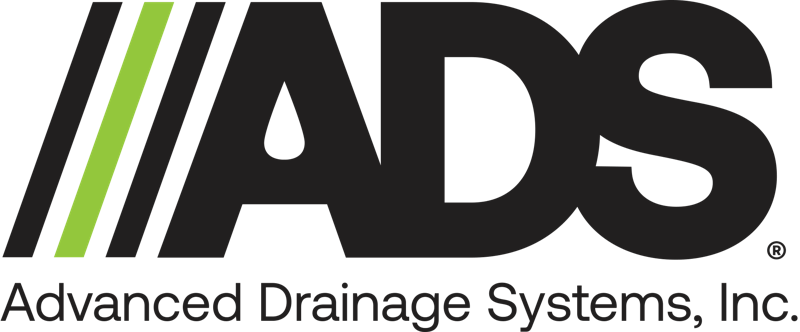Addressing the Climate Challenge
Water is integral to the health of communities everywhere. Our products and solutions help address various effects of climate change on the water cycle, such as shifts in precipitation patterns due to a warming atmosphere.
While the ADS business model directly addresses water-related climate risks, we are also focused on making our internal operations, procedures and policies more responsive to this global challenge. We are committed to monitoring and managing climate-related risks and opportunities related to our business strategy, product solutions and operations.

Our Climate Ambition
We have committed to setting and achieving Science Based Targets for reducing greenhouse gas emissions, along with broader efforts to improve efficiency and reduce environmental impact across our company. We back this up with robust data collection.
ADS absolute scope 1 & 2 GHG emissions decreased 9.0% over Fiscal 2022 baseline (Market Based). This decrease is primarily attributable to energy reductions across the manufacturing network and greening of the grid.
We are committed to the SBTi for greenhouse gas emissions in line with limiting global temperature rise to 1.5°C. In Fiscal 2025, validated ADS' science-based targets for GHG emissions.
In Fiscal 2025, ADS continued to track energy and emissions data from our U.S. and Canada operations on a facility level.
Approximately 99% of our energy is consumed in the manufacturing processes. ADS continues to evaluate opportunities to reduce our energy consumption through adopting more efficient technologies throughout our manufacturing footprint and reducing scrap and improving equipment effectiveness.
In Fiscal 2025, ADS energy usage decreased 9% over Fiscal 2022 baseline. Energy intensity (GJ/revenue) was nearly flat year over year.
ADS continues to evaluate opportunities to reduce our energy consumption through adopting more efficient technologies throughout our manufacturing footprint, including through the reduction of scrap and improvements to equipment efficiency.
As a participant in the Smartway program established by the United States EPA, ADS is making our freight transportation more fuel-efficient by continuously optimizing vehicle use, fleet routes and shipping methods to meet our efficiency goals.
Fuel economy was flat in Fiscal 2025 compared to the prior year as we believe we are near peak MPG with our current fleet assets. Through our fleet modernization effort, ADS put 249 new trucks into service since 2024 which will allow us to retire older less efficient models. The new trucks have automatic manual transmissions that employ predictive shifting to deliver peak performance and fuel economy.
We believe there is further opportunity to improve fleet efficiency through adoption of additional technology solutions such as active tire monitoring and self-inflation capabilities, managed maintenance programs and training to reduce idle time, improve MPG and maximize engine efficiency.
Climate-Related Risks and Opportunities
Managing Climate-Related Risks
The transition to a low-carbon economy can raise several risks for our industry. As such, preparing for these potential impacts is important to our overall business.
From a regulatory standpoint, the potential introduction of CO2 prices, limits on emissions and stricter environmental standards may introduce additional costs to our manufacturing processes and to our fleet. Further, potential shifts in the demand and supply of our key raw materials, including recycled and virgin plastic, could impact the cost of doing business.
In the short term, the physical risks associated with climate change, such as extreme weather events and changes to weather patterns may lead to disruptions in our supply chain, the transportation of our products and potential slowdowns in revenue. Over the long term, however, our products and services can protect communities against weather risks.
Seizing Climate-Related Opportunities
We believe our water management solutions can help mitigate some of the most damaging effects of climate change. Our stormwater management solutions are paramount to reducing water runoff, improving water quality and preserving water in communities facing extreme weather events. We can help governments, contractors and engineers reduce their carbon footprints with more energy efficient solutions.
Our manufactured products are more energy efficient than traditional materials, requiring less heavy machinery during installation and fewer deliveries per jobsite. Most importantly, ADS' plastic pipes have a lower manufacturing carbon footprint than traditional reinforced concrete and corrugated steel pipes.
Finally, the transition to a low-carbon economy also presents meaningful operational opportunities for ADS. We can improve efficiency through reducing downtime and minimizing scrap. Our logistics and transportation initiatives are increasing payload efficiency and reducing fleet miles per gallon. We can not only reduce our carbon footprint, but also cut future operating costs.
Building upon our broader position on climate change, in this section we outline ADS’ approach and performance in relation to the recommendations of the Task Force on Climate-related Financial Disclosures (TCFD), specifically, aligned with its four key pillars: strategy, metrics and targets, governance and risk management.
We believe water is the world’s most precious resource, and as an industry leader, we are committed to protecting and managing water by providing sustainable water management solutions that safeguard the environment and build resilient communities. As storms increase in frequency and intensity and climate patterns change, our stormwater solutions help prevent floods, recharge aquifers, improve food security, mitigate the risk of water scarcity and ensure quality of life in communities.
Due to the market we participate in, climate change presents ADS with both opportunities and risks – as such, in the following pages we outline how climate change may impact ADS’ activities and sets our approach to capitalizing on opportunities and mitigating potential climate-related risks.
In 2025, ADS used the following climate scenarios to develop insights into climate-related actions over the short, medium and long term.
| Short term – risks present today |
| Medium term – risks that may arise by 2032 (target date for ADS’ goals) |
Long term – risks that may arise after 2032 but before 2050 |
ADS has adopted a process to review climate-related issues on an annual basis prior to the strategic planning process. The table below outlines the climate scenarios used by ADS to inform its identification of relevant climate-related risks and opportunities.
ADS Climate Scenarios
| Scenario | Application |
| Orderly decarbonization scenario aligned with limiting warming to 1.5°C based on Principles for Responsible Investment Required Policy Scenario, the International Energy Agency Net-zero Emissions scenario and the IPCC SSP1-1.9. | Identify climate-related transition risks which may impact business should policy and regulatory action promote a low-emissions future. |
| Disorderly decarbonization scenario aligned with limiting warming to 2°C based on Principles for Responsible Investment Forecast Policies Scenario and the Network for Greening the Financial System’s Delayed Transition Scenario. | Identify the potential risks associated with decarbonization-related policy and regulatory events which would provide a shock to ADS’ current business and operating model. |
| A low policy action scenario aligned with exceeding 3°C of warming and based on the Network for Greening the Financial System Current Policies scenario, the Fifth National Climate Assessment and the IPCC SSP5-8.5 | Identify and understand geographic distribution and magnitude of physical risks associated with a high-emissions future to ADS’ operations, customers and value chain across the short, medium and long term. |
In Fiscal 2025, we completed a climate scenario analysis and developed a Climate Adaptation and Resilience Plan to guide our business’ response to climate-related impacts. Below, we highlight ADS’ key climate-related physical and transition risks at a high level and includes information relevant to TCFD Strategy disclosure recommendations a, b and c.
Climate-related issues and potential financial impacts
| Risk | Time horizon | Potential financial impact | How ADS is equipped to manage and monitor risk |
| Climate-related regulations may increase energy and commodity prices | Long-term | Increased OpEx | ADS is decarbonizing its operations and will continue to assess opportunities to increase efficiency |
| Climate-related regulations may increase resources needed for disclosure and compliance | Short-term | Increased OpEx | ADS monitors new regulations on an ongoing basis and has consistently increased its capacity for data collection and regulatory disclosure over several years. |
| Heat stress may impact labor productivity and availability | Short-term | Increased OpEx | ADS is developing management and oversight processes to ensure employee safety in high heat working con |
| Extreme weather events may cause supply chain disruptions | Short-term | Increased OpEx | ADS is working to diversify and assess climate readiness among its critical suppliers to provide redundancy in the event of extreme weather events |
| Extreme weather events may cause operational down time and facility damage | Short-term | Increased CapEx Decreased Revenue | ADS site risk assessments increasingly consider the potential impacts of climate change, and management engages in ongoing improvement of business continuity and risk management planning. |
| Opportunity | Time horizon | Potential financial impact | How ADS is equipped to manage and monitor risk |
| Increasing frequency and severity of floods may increase demand for ADS products | Medium-term | Increased Revenue | ADS continues to expand its capacity to meet demand in key flood-prone regions. |
ADS intends to achieve the following by Fiscal 2032:
- 50.4% reduction in scope 1 & 2 GHG emissions *
- 30% reduction in scope 3, category 1 emissions*
- 1 billion pounds of recycled material per year
ADS currently discloses several metrics that can be used to assess and monitor climate-related transition risks and opportunities, which are available for review across our Fiscal 2025 Sustainability Report. We also provide more details on our progress toward SBTs for GHG emissions including fleet metrics and use of recycled material. Risks associated with GHG emissions primarily relate to regulatory actions, including restrictions on GHG emissions, taxes on GHG emissions and cross-border fees associated with GHG emissions. Reducing GHG emissions across ADS operations reduces our exposure to many climate-related transition risks associated with reducing GHG emissions, including taxes, fees and tariffs related to carbon emissions. Similarly, reducing ADS’ reliance on virgin materials to manufacture products can reduce exposure to climate-related transition risks associated with reducing GHG emissions, including taxes, fees and tariffs related to carbon emissions.
*SBTi has approved ADS’ SBTs for GHG emissions. Baseline for SBTs is Fiscal 2022.
This summary shows activities ADS is undertaking to support more sustainable stormwater management, including both the decarbonization of our own operation and distribution footprint as well as working to increase our use of recycled material in products. ADS is committed to providing lower carbon products that allow communities to both plan for and recover from storm events of increasing frequency and intensity.
| ACTIONS PRE-2022 | 2022 - 2032 | 2032 - 2050 | |
| Recycled Material |
|
|
|
| Energy Efficiency |
|
| Continued focus to reduce energy usage across operations and distribution as new technologies emerge. |
GHG Emissions Reductions
|
|
| Decarbonize operations and distribution (including ADS fleet). |
Sustainability governance structure ADS’ Board oversees the establishment and execution of corporate strategy. The company’s senior leadership team is responsible for developing our sustainability strategy, focusing on priorities and for the company’s sustainability performance – and reports to the Board and its committees on ADS’ sustainability activities and progress. Ongoing sustainability activities are coordinated by ADS’ director of sustainability. | Board oversight of climate-related risks and opportunities Board oversight of climate-related risks and opportunities at ADS consists of the following:
| Management oversight of sustainability Features of ADS management’s role in managing climate-related risks and opportunities include:
ADS’ management level sustainability committee meets quarterly to:
|
ADS has a process, led and initiated by the Sustainability function, to review and assess climate-related physical and transition risks at least annually. ADS’ process involves:
- Using Climate scenario analysis to identify and assess climate-related risks.
- Annual review and update of climate-related risks.
- Engaging internal stakeholders to both increase awareness of climate-related risks across the business, and to inform assessment of risks.
ADS has developed a climate adaptation and resilience plan to facilitate ongoing management of climate-related risks (and opportunities) in the following ways:
- Provide a centralized platform for ongoing oversight by the Director of Sustainability.
- Ensure that each risk is managed and assigned to an appropriate business function within ADS.
- Track development or changes to risks and opportunities over time.
ADS has also developed a process to review and update its climate-related risks and opportunities annually, while managing existing risks and opportunities on an ongoing basis through its climate adaptation and resilience plan.
- Beginning in 2024, ADS incorporated climate scenario analysis into its climate-risk identification and assessment process.
- ADS has formalized an annual climate risk management update process.
- Insights and outcomes of the climate risk management update process inform annual strategic planning and enterprise risk management processes.
| Board Oversight |
| Ongoing management |
|
|
|
Annual update processes |
Climate Risk Management
|
| Strategic Planning
Process
Annual process to set strategic business priorities |
| Enterprise Risk
Management
Annual process to identify and update key enterprise risks and management approach |
Stormwater Events
As the climate warms, the amount of water available to be stored in the atmosphere increases, causing more intense precipitation and more frequent severe storms. As shown in the following chart, the frequency of billion-dollar stormwater management related disasters, particularly severe storms, is increasing. In 2024, there were 25 stormwater-related natural disasters in the United States that cost an estimated $176 billion. If we look back twenty-two years, there were just six events in 2003.
ADS’ stormwater products help communities keep their residents safe from flooding and other problems associated with increased rainfall. We believe that by taking proactive steps, we can increase our positive impact through enhancing stormwater management in communities nationwide.

America’s Climate Leaders, USA Today

USA Today included ADS on its annual list of America’s Climate Leaders for our efforts to reduce greenhouse gas emissions. Recycling more than a half-billion pounds of plastic every year helps ADS reduce emissions by more than 630 million pounds — equivalent to taking 61,000 cars off the road.
